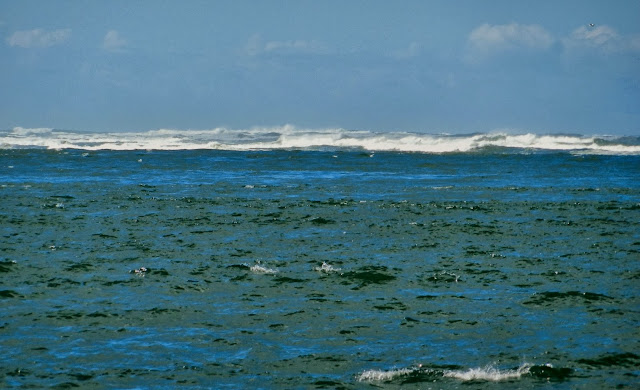While waiting for some
bad weather to pass, namely gale-force winds hammering the Pacific Northwest, we decided to make use of our
time and pick up our car which we had left in San Francisco. We drove a rental car from Astoria to
Portland where I dropped Leonard off at the Airport for his flight to San
Francisco to retrieve our car. Java and
I stayed at my mother’s home while Leonard began the arduous drive back to Portland,
a 12 hour trip requiring several stops for some rest and sleep – he arrived the
following morning at 8am. He had
encountered strong wind and rain, making visibility difficult at times, as did
my mother and I when we drove back from shopping.
 |
| A Weekend of Heavy Rain and Strong Winds |
A heavy downpour of rain left standing water
on the freeway sending spray over the windshield and above the sides
of the car – were we in a boat, or in a car!?
After Leonard arrived in Portland, we drove back to Astoria anxious to
check on our boat – had we added enough lines and fenders? Did the boat sustain
any damage at the dock? We hurried to
the boat slip and found that all was well with Got d’ Fever despite the strong wind that had passed through the
area as reported by our neighbor on Castaway, a fishing boat. He had also noted
that the Columbia River Bar was closed in addition to all the other river bars along the
Oregon coast due to 55 mile an hour winds. It will take a while for
the seas to settle down, but we are hopeful a weather window will open up later
this week so we can begin our journey by sea up the Washington coast.




























